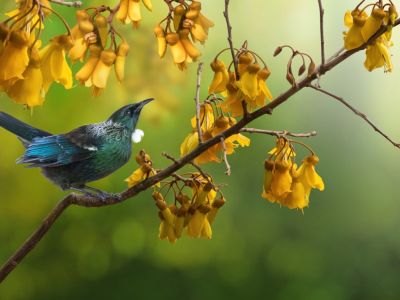If you aren’t familiar with this gorgeous and unusual plant, you’ll be interested in a few kowhai tree facts. Anyone living in a mild zone can consider planting a kowhai tree in order to enjoy the beautiful blossoms spring after spring. Read on for tips on kowhai tree care.
Kowhai Tree Facts
The iconic Kowhai tree fascinates botanists and gardeners alike. Kowhais produce brilliant yellow flowers in spring, such a prominent feature of the plant that the word “kowhai” means yellow in te reo, the language of the Maori. They are still used today to make yellow dye. Abundant in nectar, these blossoms feed wild builds as well as insect pollinators. On deciduous species, the flowers appear before the leaves, making the show additionally dramatic. But that’s not the only ornamental feather. Kowhai seed pods are striking, cold hardy and excellent at floating. Parts of the plant have been used medicinally for generations.
Planting a Kowhai Tree
Kowhai trees grow throughout New Zealand. They are not picky about their habitat and can be found in nature along coastal cliffs, in forests and also as part of inland brush ecosystems. They propagate from seeds and can grow into tall trees, 75 feet (25 m) tall. If you are considering planting a kowhai tree, you’ll first want to gather information about the eight different species. Most of the kowhai species take the form of trees, but there is at least one shrub version and one prostrate variety. Every kowhai grows yellow seeds with hard coats from which new plants can be propagated. You’ll need to scratch the hard seed coat before planting the seed, then soak the seed in water until it doubles in size. If you want to start growing a kowhai tree in your backyard, you’ll probably need to use a seed since kowhai plants are hard to find in the US.
Growing a Kowhai Tree
Only gardeners in the warmest regions of the US will be able to try growing a kowhai tree. You’ll see them, for example, in communities along the California coast. This tree likes warm climates with mild winters and can grow in US Department of Agriculture plant hardiness zones 9b to 11. Plant the seeds in small pots, keep them watered, then move them to larger pots, as necessary. Let them grow in pots in a direct sun location for two or three years, then transplant in spring to a wind-protected area of the garden. Kowhai tree care isn’t difficult, although they do require regular irrigation.
